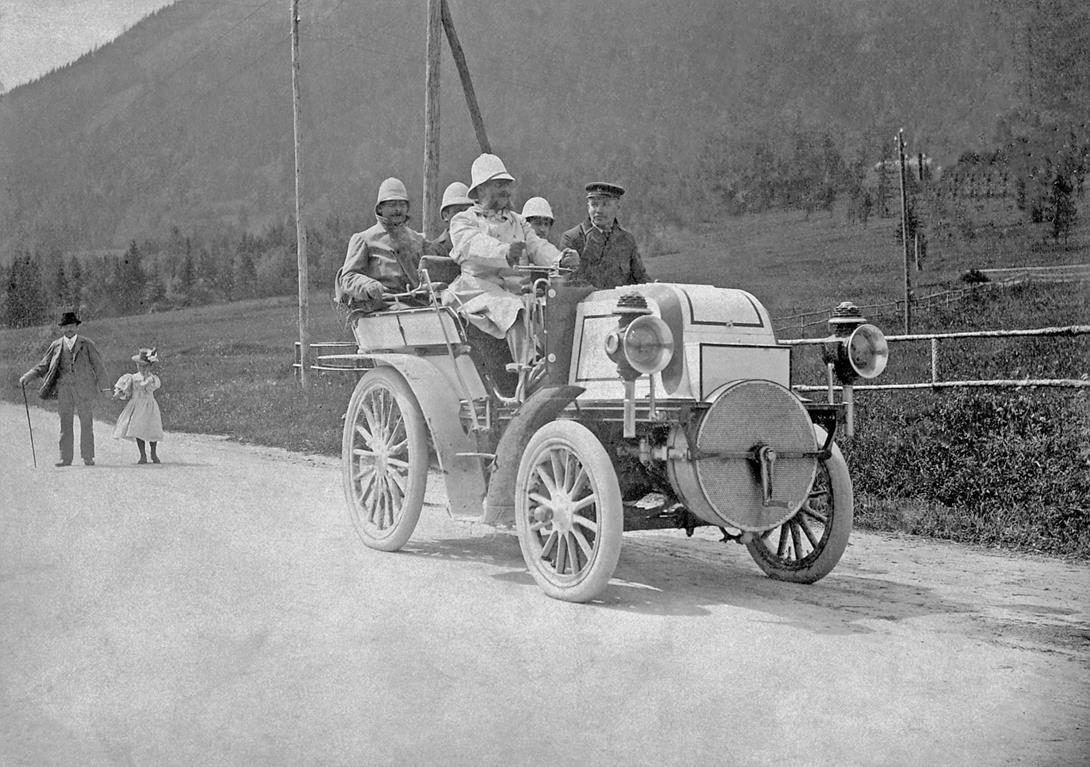The German Grand Prix in Hockenheim this Sunday marks 125 years of Mercedes-Benz Motorsport.
To mark the occasion and our partnership with Mercedes-AMG Petronas Motorsport, we picked out 10 facts about Mercedes-Benz motorsport ahead of the race this weekend.
I. Motorsport wouldn’t have come this far without the invention of the automobile. Carl Benz filed his patent for a “gas-powered vehicle” on the 29 January 1886 at the age of 42. The date is known as the day the car was born.
II. On 3 April 1885 Gottlieb Daimler and Wilhelm Maybach, whose workshop was just 100km away from Benz’s, registered a “gas or petroleum engine” which they installed in a wooden-frame two-wheel vehicle similar to a motorcycle. Daimler went on to build his ‘Motorised Carriage’, the world’s first four-wheeled automobile a few short months after Carl Benz had built the first ever car.
III. Benz’s achievement of inventing the world’s first car wouldn’t have been possible without the investment from Betha Benz, Carl’s wife. Bertha financed Carl’s invention using her dowry and in 1888, after he had patented the design, Bertha took the car on its first long-distance drive with her teenage sons, without telling Carl. When she returned five days later, her trip was the talk of the town and she had single handily raised the profile of Carl’s “Patent Motor Car.” Behind every man…
IV. The automobile branched out into the world of motorsport with the rise in popularity of the gentleman-driver, a name given to wealthy members of the upper classes who drove their vehicles themselves instead of employing chauffeurs. They used the automobile as a piece of sports equipment and competed with their peers in races and endurance runs.
V. Organised competition between gentleman drivers is arguably the birthplace of the Mercedes brand. Emil Jellinek, a businessman [pictured above] bought and raced a number of Daimler-Motoren Gesellschaft (DMG) cars under the pseudonym Mércèdes, the name of his eldest daughter. In 1900 Jellinek commissioned the DMG chief engineer Wilhem Maybach to build a new automobile with an especially powerful engine. The car bared the name of Mércèdes and at Nice Week race festival in March 1901, the car won almost every race and became the talk of the town. Following the car’s success, Mercedes became DMG’s trade name on 23 June 1902.

65 years ago: 1954 The first Formula One race for Mercedes-Benz [Credit: Mercedes-Benz]
VI. The iconic silver look of the legendary Silver Arrows was a fluke. The car, a Mercedes-Benz W25 was a new design for the 1934 race season. Painted to tie-in with international auto-racing colours [British Racing Green, Bleu de France] the car was originally white to represent the German origin of the brand. But, the day before the race, the car was slightly above the strict weight limit of 750 kg, so the team took the decision to strip the car of its white paint to reduce the weight. This exposed the silver bodywork underneath and the rest, as they say, is history.
VII. Mercedes-Benz made its Formula One debut in 1954 at the French Grand Prix in Reims [pictured above]. Juan Manuel Fangio and Karl King driving the newly developed W196 racing car took first and second place. Fangio went on to win the world championship later that year.
VIII. The Carl Benz patent has been admitted into the UNESCO “Memory of the World” International Documentary Heritage Register alongside other outstanding documents such as the Magna Carta, the Gutenberg Bible or Johann Sebastian Bach’s Mass in B minor.
IX. The German Grand Prix on Sunday will be the 200th start for Mercedes in Formula One.
X. In his entire Formula One career, Lewis Hamilton has raced with Mercedes-Benz power.





